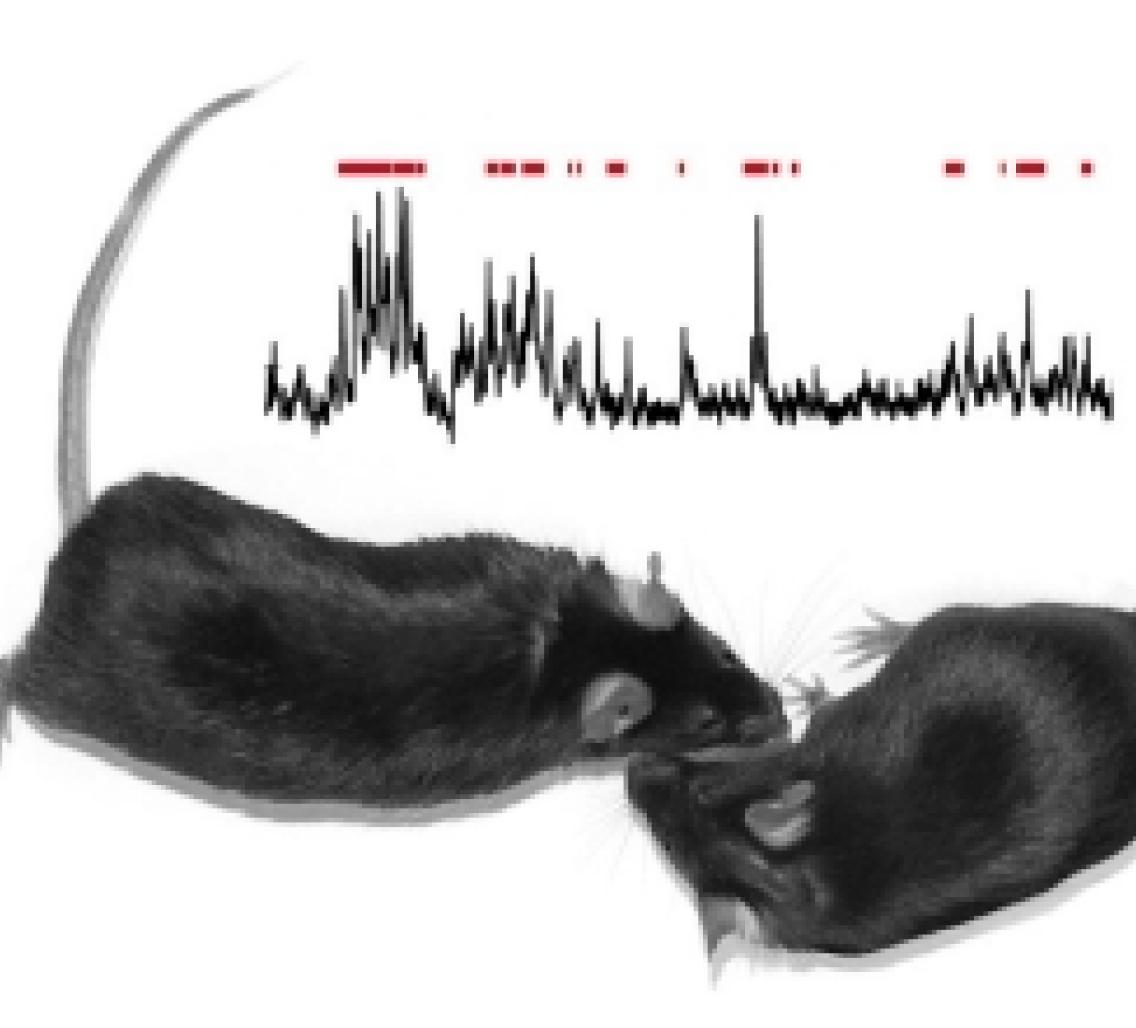Scientists tie social behavior to activity in specific brain circuit

A team of Stanford University investigators has linked a particular brain circuit to mammals’ tendency to interact socially. Stimulating this circuit — one among millions in the brain — instantly increases a mouse’s appetite for getting to know a strange mouse, while inhibiting it shuts down its drive to socialize with the stranger.
The new findings, published June 19 in Cell, may throw light on psychiatric disorders marked by impaired social interaction such as autism, social anxiety, schizophrenia and depression, said the study’s senior author, Karl Deisseroth, MD, PhD, a professor of bioengineering and of psychiatry and behavioral sciences. The findings are also significant in that they highlight not merely the role of one or another brain chemical, as pharmacological studies tend to do, but rather the specific components of brain circuits involved in a complex behavior. A combination of cutting-edge techniques developed in Deisseroth’s laboratory permitted unprecedented analysis of how brain activity controls behavior.
Deisseroth, the D.H. Chen Professor and a member of the interdisciplinary Stanford Bio-X institute, is a practicing psychiatrist who sees patients with severe social deficits. “People with autism, for example, often have an outright aversion to social interaction,” he said. They can find socializing — even mere eye contact — painful.
Deisseroth pioneered a brain-exploration technique, optogenetics, that involves selectively introducing light-receptor molecules to the surfaces of particular nerve cells in a living animal’s brain and then carefully positioning, near the circuit in question, the tip of a lengthy, ultra-thin optical fiber (connected to a laser diode at the other end) so that the photosensitive cells and the circuits they compose can be remotely stimulated or inhibited at the turn of a light switch while the animal remains free to move around in its cage.
Monitoring activity in real time
Using optogenetics and other methods he and his associates have invented, Deisseroth and his associates were able to both manipulate and monitor activity in specific nerve-cell clusters, and the fiber tracts connecting them, in mice’s brains in real time while the animals were exposed to either murine newcomers or inanimate objects in various laboratory environments. The mice’s behavioral responses were captured by video and compared with simultaneously recorded brain-circuit activity.
A team of Stanford University investigators has linked a particular brain circuit to mammals’ tendency to interact socially. Stimulating this circuit — one among millions in the brain — instantly increases a mouse’s appetite for getting to know a strange mouse, while inhibiting it shuts down its drive to socialize with the stranger.
The new findings, published June 19 in Cell, may throw light on psychiatric disorders marked by impaired social interaction such as autism, social anxiety, schizophrenia and depression, said the study’s senior author, Karl Deisseroth, MD, PhD, a professor of bioengineering and of psychiatry and behavioral sciences. The findings are also significant in that they highlight not merely the role of one or another brain chemical, as pharmacological studies tend to do, but rather the specific components of brain circuits involved in a complex behavior. A combination of cutting-edge techniques developed in Deisseroth’s laboratory permitted unprecedented analysis of how brain activity controls behavior.
Deisseroth, the D.H. Chen Professor and a member of the interdisciplinary Stanford Bio-X institute, is a practicing psychiatrist who sees patients with severe social deficits. “People with autism, for example, often have an outright aversion to social interaction,” he said. They can find socializing — even mere eye contact — painful.
Deisseroth pioneered a brain-exploration technique, optogenetics, that involves selectively introducing light-receptor molecules to the surfaces of particular nerve cells in a living animal’s brain and then carefully positioning, near the circuit in question, the tip of a lengthy, ultra-thin optical fiber (connected to a laser diode at the other end) so that the photosensitive cells and the circuits they compose can be remotely stimulated or inhibited at the turn of a light switch while the animal remains free to move around in its cage.
Monitoring activity in real time
Using optogenetics and other methods he and his associates have invented, Deisseroth and his associates were able to both manipulate and monitor activity in specific nerve-cell clusters, and the fiber tracts connecting them, in mice’s brains in real time while the animals were exposed to either murine newcomers or inanimate objects in various laboratory environments. The mice’s behavioral responses were captured by video and compared with simultaneously recorded brain-circuit activity.